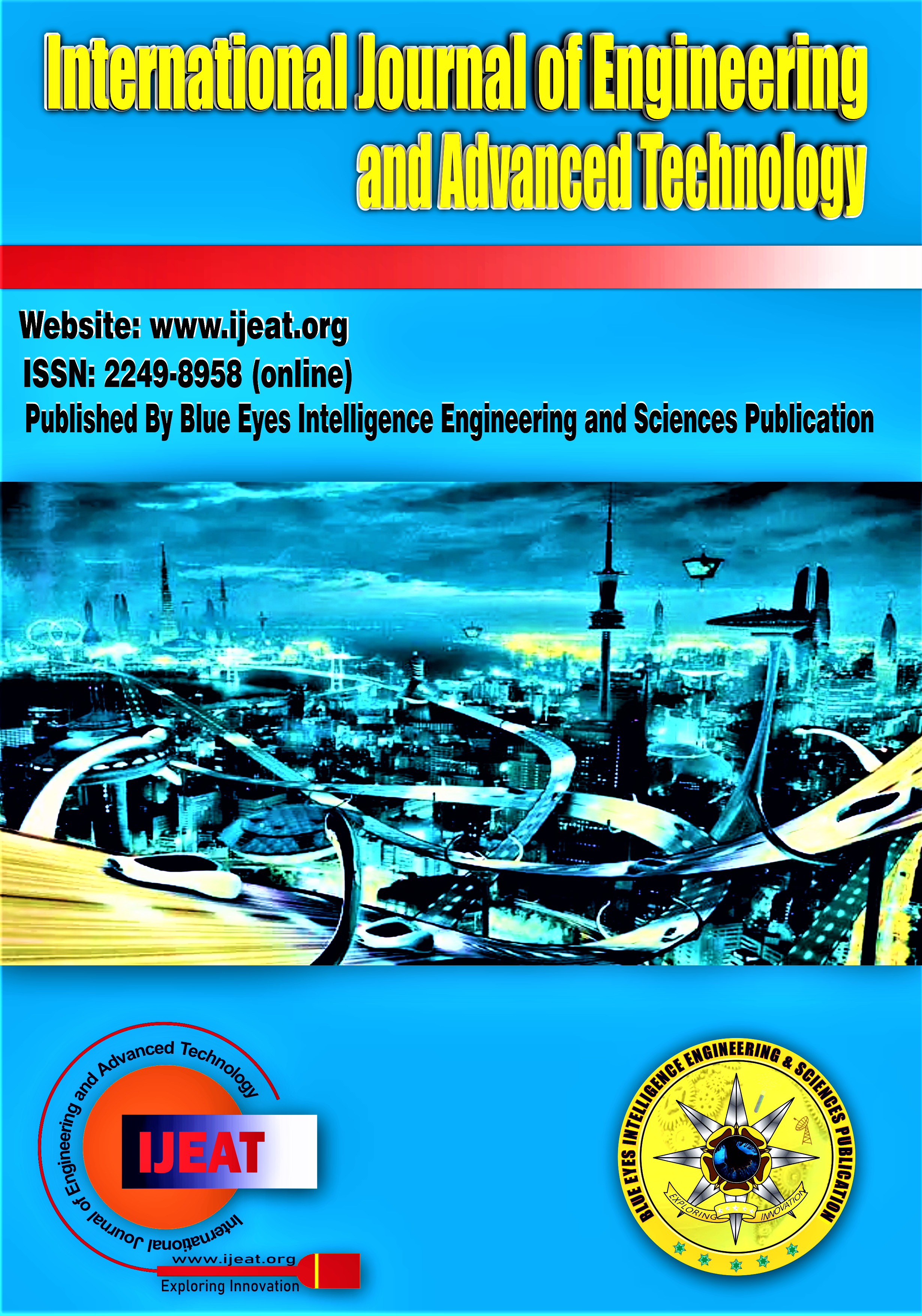Exploring the Potential of Eco-Polymer Reinforced Bricks (EPR-Bricks) as Sustainable Construction Materials
Main Article Content
Abstract
The growing issue of plastic waste, surpassing 350 million metric tons annually, presents a significant environmental challenge, with only a small fraction being recycled. This research examines Eco-Polymer Reinforced Bricks (EPR Bricks) as an innovative approach to addressing this crisis by repurposing non-biodegradable plastic waste into durable and sustainable construction materials. The study focuses on incorporating polypropylene plastics along with other materials to produce EPR Bricks, evaluating their performance based on strength, durability, cost-effectiveness, and environmental impact. The findings demonstrate that EPR Bricks offer a promising solution to reduce plastic waste accumulation and minimise ecological damage. Furthermore, these bricks support sustainable construction practices, offering a viable alternative to traditional building materials. This research underscores the potential of EPR Bricks to contribute to environmental conservation while providing a cost-efficient and resilient building material for the construction industry.
Downloads
Article Details
Section

This work is licensed under a Creative Commons Attribution-NonCommercial-NoDerivatives 4.0 International License.
How to Cite
References
Samadi, M., Hussin, M. W., Lee, H. S., Sam, A. R. M., Ismail, M. A., Abdul Shukor Lim, N. H., Ariffin, N. F., & Khalid, N. H. A. (2015). Properties of mortar containing ceramic powder waste as cement replacement. Jurnal Teknologi (Sciences & Engineering), 77(12). DOI: https://doi.org/10.11113/jt.v77.6315
Al-Hashmi, E. A., & Ismail, Z. Z. (2008). Use of waste plastic in concrete mixture as aggregate replacement. Waste Management, 28(11), 2041-2047. DOI: https://doi.org/10.1016/j.wasman.2007.08.023
Ghar, S. (2022, April). An analysis of the Indian real estate sector and its impact on the economy over the last five years (Master of Business Administration thesis). DOI: https://doi.org/10.13140/RG.2.2.24762.81600
Neville, A.M. (2011) Properties of Concrete. Pearson Education Limited, Essex.https://www.scirp.org/reference/referencespapers?referenceid=1855282
Aly, S., Kannan, D., El-Dieb, A., Taha, M. R., & Abu-Eishah, S. (2017). Ceramic waste powder: An alternative ingredient for green concrete. Proceedings of the International Structural Engineering and Construction Conference (ISEC). DOI: https://doi.org/10.14455/ISEC.res.2017.209
Bansal, Ankur & Mishra, Geetika & Bishnoi, S. (2016). Recycling and Reuse of Construction and Demolition waste: sustainable approach. In Proceedings of the 7th International Conference on Sustainable Built Environment 2016 (Vol. 7). Kandy, Sri Lanka. https://www.researchgate.net/publication/314065807_Recycling_and_Reuse_of_Construction_and_Demolition_waste_sustainable_approach
Abdullah, Mohd Mustafa Al Bakri & Mohamed Noor, Norazian & Mohamed, Ts. Dr. Mazlan & Kamarudin, H. & Ruzaidi, Che & Jamaludin, Liyana. (2013). Strength of Concrete with Ceramic Waste and Quarry Dust as Aggregates. Applied Mechanics and Materials. Vol. 421. 390-394. DOI: http://dx.doi.org/10.4028/www.scientific.net/AMM.421.390
Akca, K. R., Çakır, O., & İpek, M. (2015). Properties of polypropylene fibre-reinforced concrete using recycled aggregates. Construction and Building Materials, 98, 620-630. DOI: https://doi.org/10.1016/j.conbuildmat.2015.08.133
Mandal, S., Anand, V., & Agarwala, S. K. (2023). Concrete technology: Theory and practice. All India Council for Technical Education (AICTE). ISBN: 978-81-960386-9-4. https://zealpolytechnic.com/wp-content/uploads/2023/04/Concrete-Technology-Theory-and-Practice-Civil-Sem-III.pdf
Gopinath, D., & Senthamarai, R. M. (2012). Mechanical properties of concrete with ceramic waste aggregate. TARCE, 1(2), July-December, 2012. https://www.trp.org.in/wp-content/uploads/2016/11/TARCE-Vol.1-No.2-July-Dec-2012-PP.10-13.pdf
Aïtcin, P.-C. (1998). High Performance Concrete (1st ed.). CRC Press. DOI: https://doi.org/10.4324/9780203475034
Puthussery, Joseph & Kumar, Rakesh & Garg, Anurag. (2017). Evaluation of recycled concrete aggregates for their suitability in construction activities: An experimental study. Waste Management. 60. 270-276. DOI: http://dx.doi.org/10.1016/j.wasman.2016.06.008
Siddique, R., Khatib, J., & Kaur, I. (2008). Use of recycled plastic in concrete: A review. Waste Management, 28(10), 1835-1852. DOI: https://doi.org/10.1016/j.wasman.2007.09.011
Umar, Tariq & Tahir, Abdullah & Egbu, Charles & Honnurvali, Mohamed & Saïdani, Messaoud & Al-Bayati, Ahmed. (2021). Developing a Sustainable Concrete Using Ceramic Waste Powder, Conference Paper, pp – 157 – 162. DOI: https://doi.org/10.1007/978-3-030-48465-1_27
Bureau of Indian Standards. (2016). Indian standard specifications for coarse and fine aggregates from natural sources for concrete (IS 383:2016). Bureau of Indian Standards. https://www.services.bis.gov.in/tmp/tbl5_2024-11-10_11.pdf
Ramadevi, K. (2017). A study on the properties of concrete with ceramic waste replaced for fine aggregate. International Journal of Civil Engineering and Technology (IJCIET), 8(8), 1730–1737. http://iaeme.com/Home/issue/IJCIET?Volume=8&Issue=8
Daniyal, M., & Ahmad, S. (2015). Application of waste ceramic tile aggregates in concrete. International Journal of Innovative Research in Science, Engineering and Technology, 4(12), 12808. https://www.researchgate.net/publication/307509465_Application_of_Waste_Ceramic_Tile_Aggregates_in_Concrete
Sahu, S. & Badger, S. & Thaulow, N. & Lee, Richard. (2004). Determination of water–cement ratio of hardened concrete by scanning electron microscopy. Cement & Concrete Composites - Cement Concrete Composites. 26. 987-992. DOI: https://doi.org/10.1016/j.cemconcomp.2004.02.032
Thomas, B. S., & Gupta, R. C. (2016). A comprehensive review of the applications of waste tyre rubber in cement concrete. Renewable and Sustainable Energy Reviews, 54, 1323-1333. DOI: https://doi.org/10.1016/j.rser.2015.10.092
Ghar, S., Jain, K. (2020). The relative research on planning, modelling, and analysis of G+6 residential buildings with and without a multi-level car parking facility. International Journal of Engineering and Advanced Technology, 10(1), 340–345. DOI: https://doi.org/10.35940/ijeat.A1895.1010120
Ahmed, H. U., Faraj, R. H., Hilal, N., Mohammed, A. A., & Sherwani, A. F. H. (2021). Use of recycled fibers in concrete composites: A systematic comprehensive review. Composites Part B: Engineering, 215, 108769. DOI: https://doi.org/10.1016/j.compositesb.2021.108769





